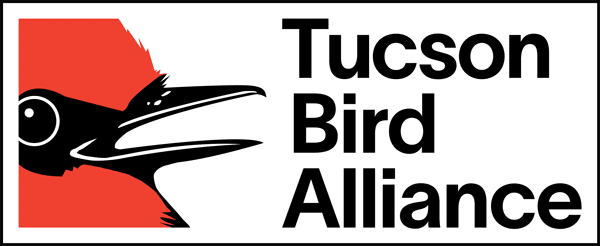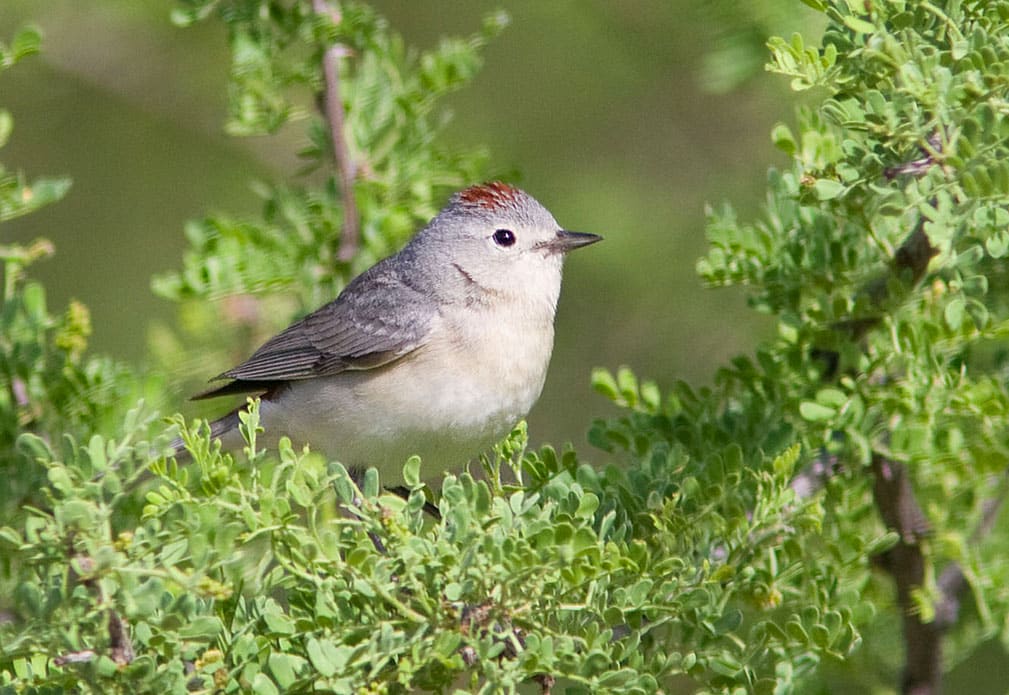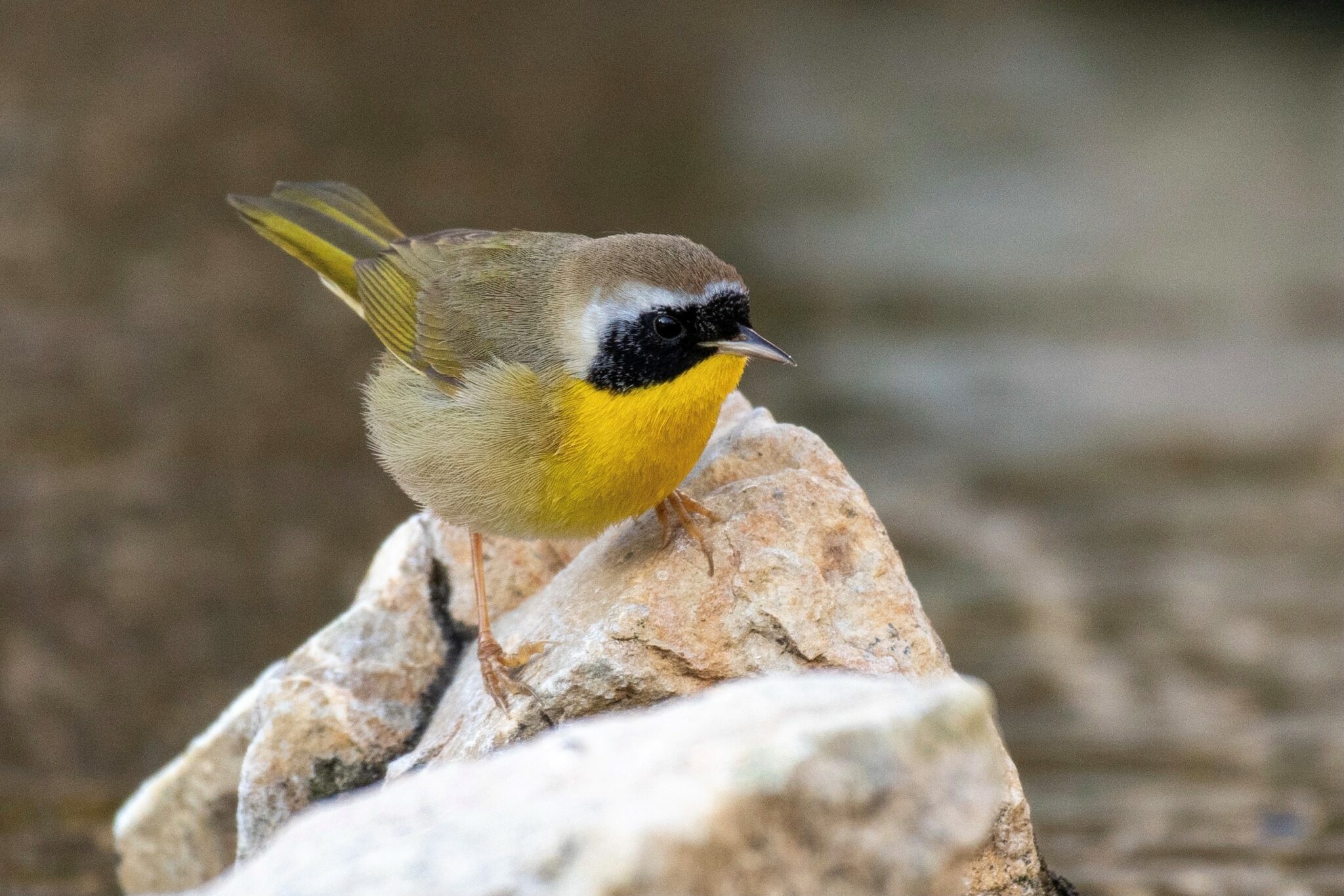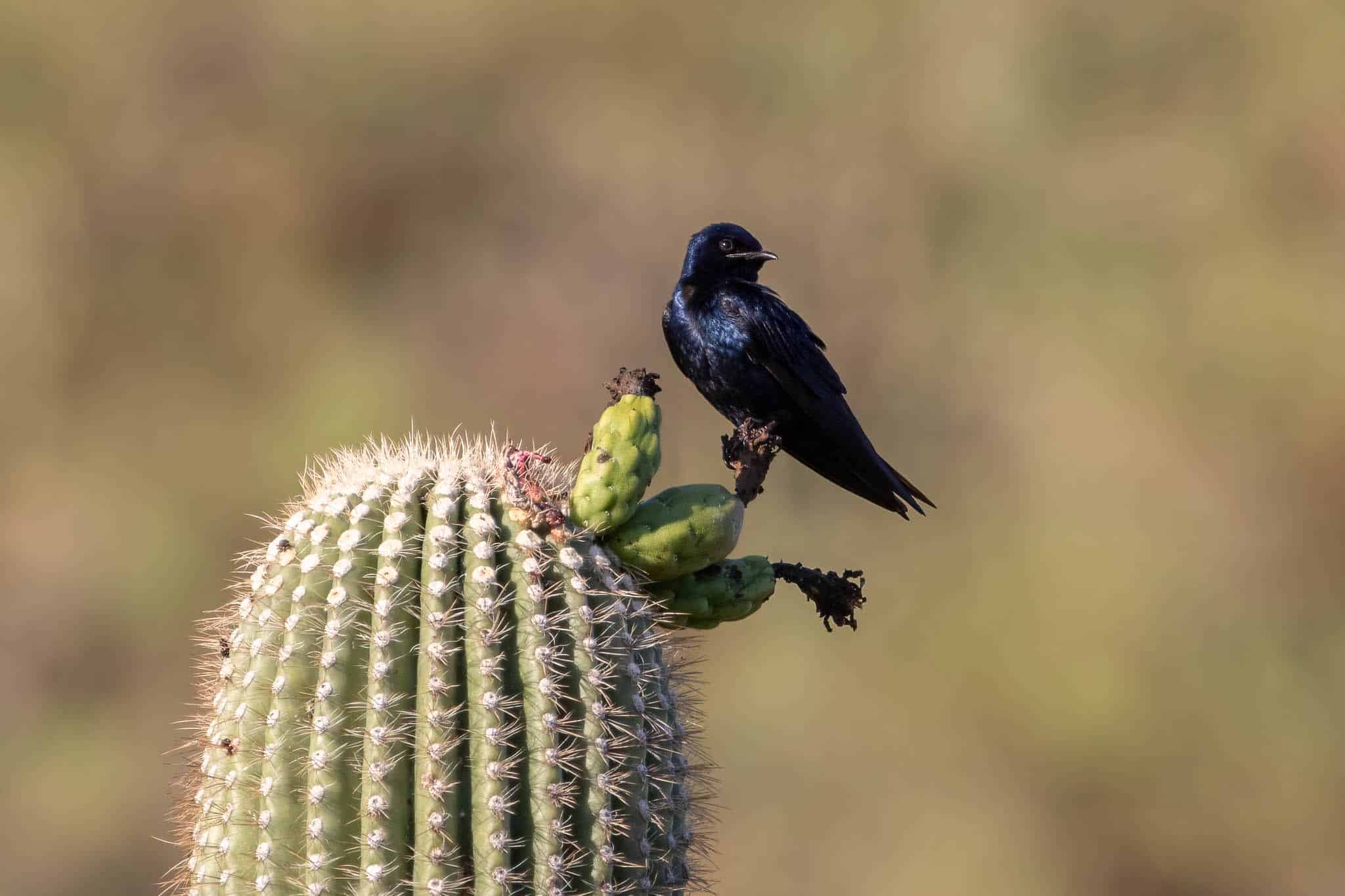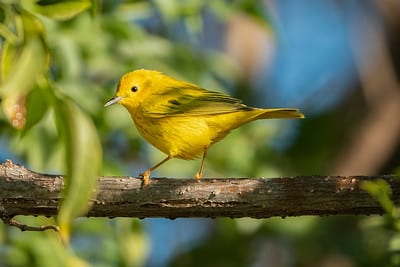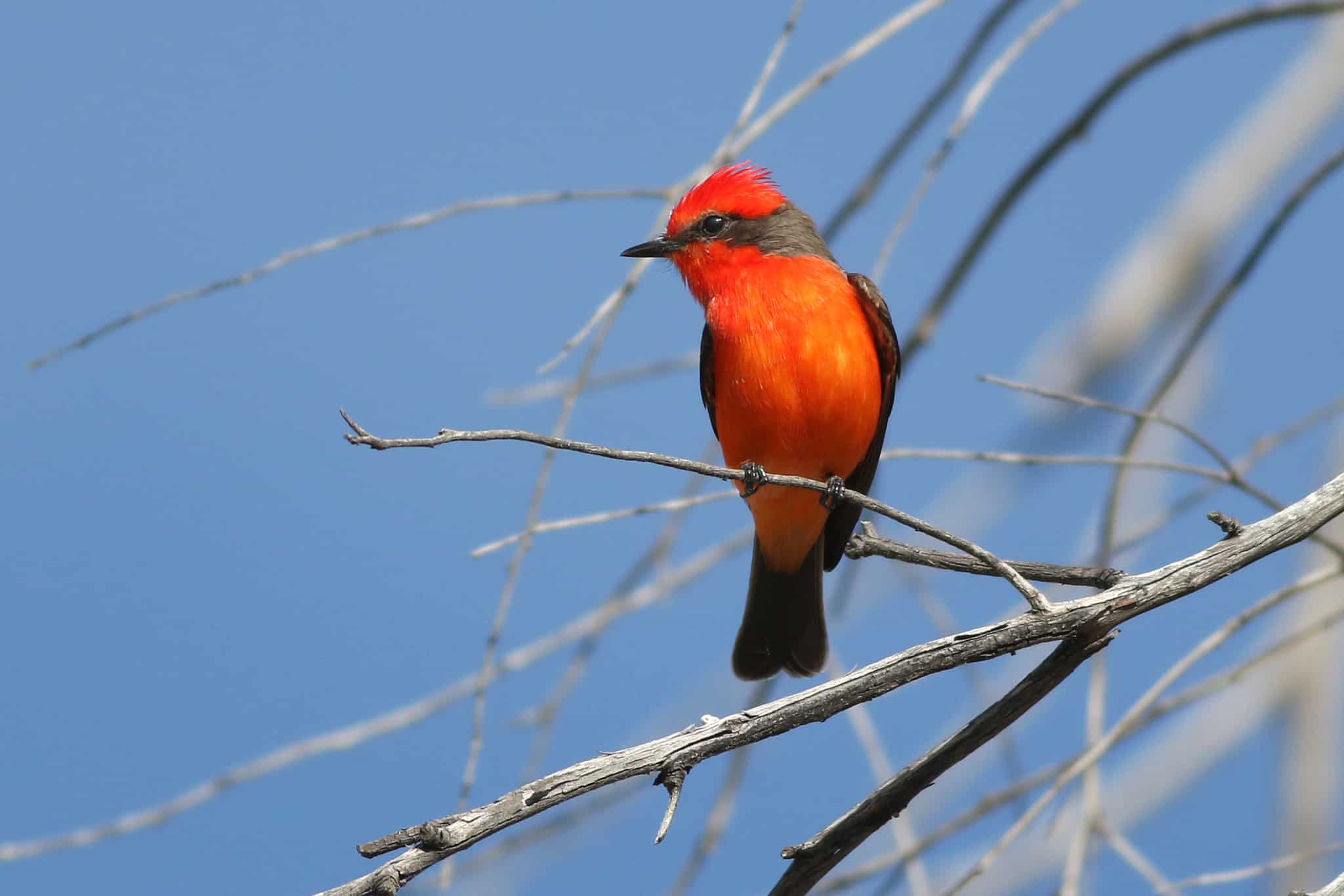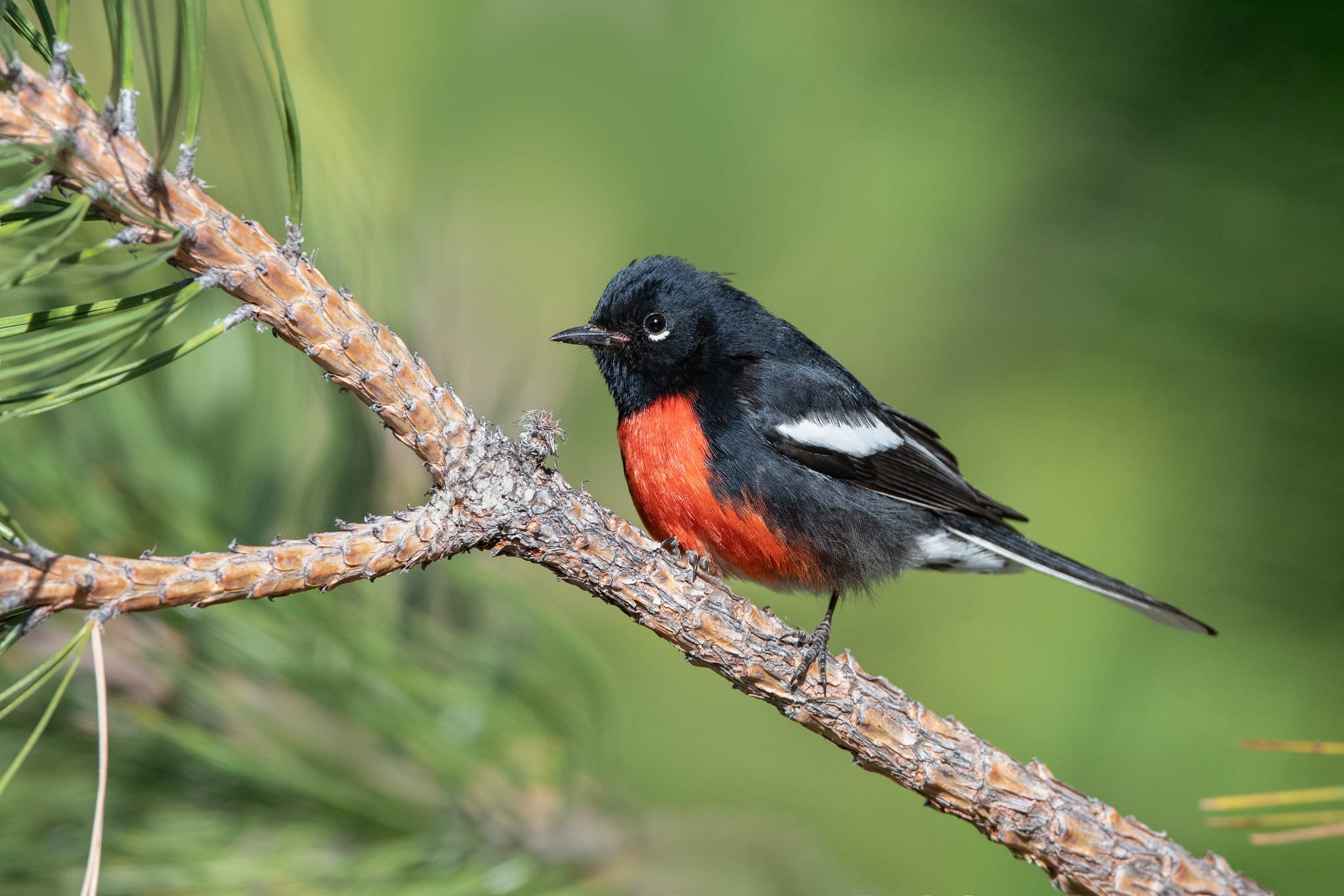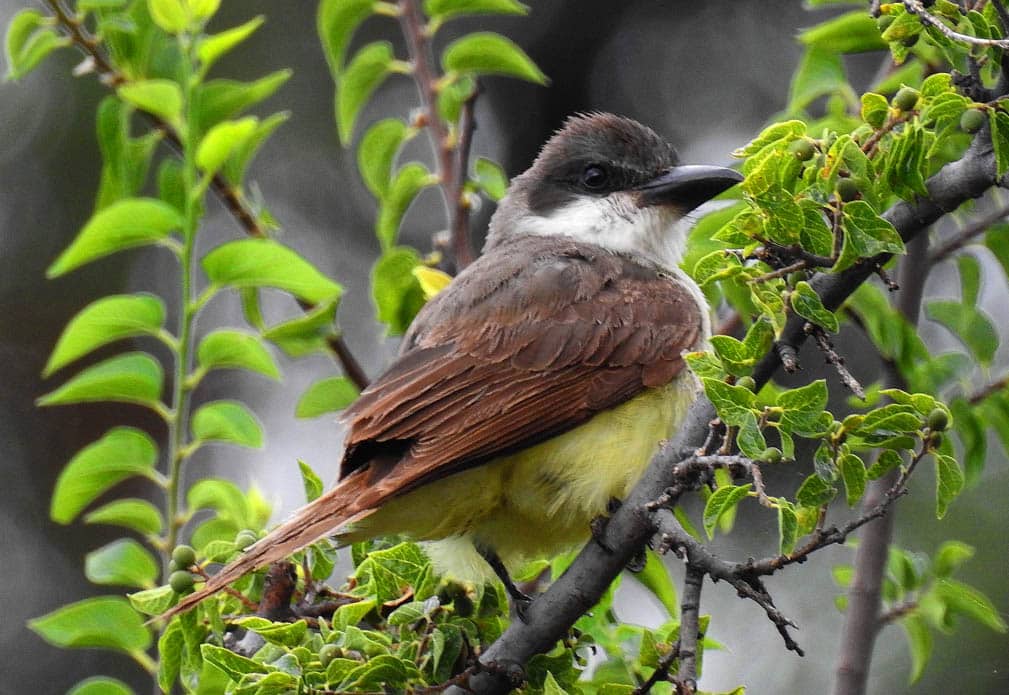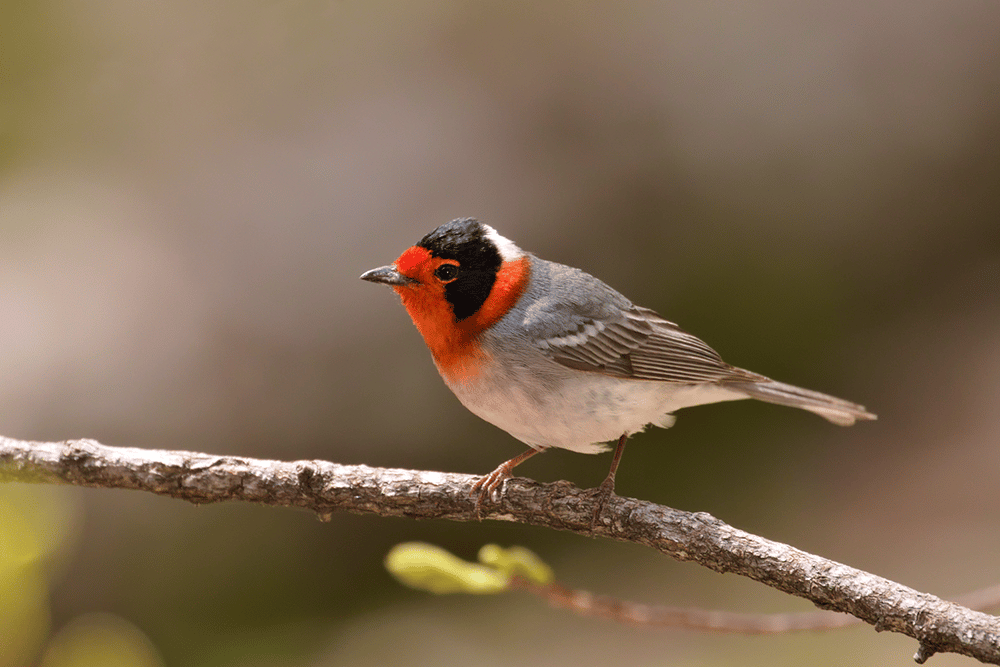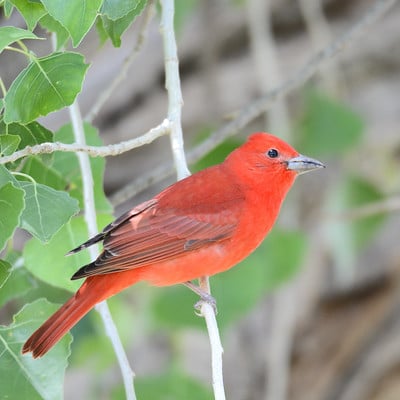Difficulty: Moderate (Two mile loop over level, but often soft, uneven and dusty terrain. No restrooms are available)
Isabella Lee Natural Preserve, at the confluence of Agua Caliente and Tanque Verde wash in northeast Tucson, is a dry mesquite bosque providing year-round habitat for resident and migrant birds. Summer hosts Lucy’s Warblers, Bell’s Vireos, and Ash-throated Flycatchers. One or two pairs of Blue Grosbeaks are also possible along with many other Sonoran Desert loving bird species. Drive time to meeting location from festival venue is about 25 minutes, specific meeting instructions will be emailed beforehand. Limited to 10 participants.
Lucy’s Warbler by Lois Manowitz
